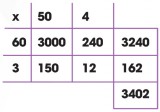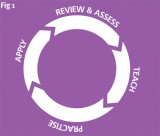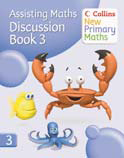If children are falling behind in maths then short, targeted interventions are the best way to meet their needs, says Peter Clarke...
A teacher’s rationale for planning and teaching in mathematics is, for the moment at least, based upon the age related expectations set down in the National Curriculum (2000) and the Primary Framework for Mathematics (2006). However, effective teaching also caters for the needs of all children, including those children who are working below and above expectations, to ensure that their specific needs are being met.
Within the present educational system, it may be considered that children who are working at or below Level 1 at age 7, or Level 3 at age 11, have some degree of mathematicaldifficulty that warrants specialist intervention in order to help them reach age-related expectations.
The most effective intervention relies on the identification of the individual child’s specific strengths and weaknesses, with intervention targeted at addressing particular difficulties and misconceptions.
In order to provide the most effective form of intervention, it is important first to assess accurately where a child is at in their mathematical understanding, and find out what common errors they make, and misconceptions they hold.
We need to remember, however, that mathematics is not a single branch of knowledge: it is made up of many different areas, including understanding number and the number systems, calculating, measuring, an awareness of shape and space, and handling data – not to mention the use and application of pure mathematics in real world problem solving contexts.
So often a child is identified as being ‘good’ or ‘poor’ at mathematics because of their ability in one area of mathematics, namely: number, and more precisely, their ability to manipulate these numbers in the form of calculations. However, it is possible for children to show marked differences in almost all areas of mathematics
Notwithstanding the above, of all the areas of mathematics it is calculating that creates more problems than others for children, and it is the area where most intervention is needed.
Studies of children with mathematical difficulties show them to be more consistently weak at recalling number facts from memory, often relying instead on counting-based strategies.
Most children, after successful teaching and learning opportunities, are able to grasp the concepts of addition, subtraction, multiplication and division. However, it is difficulties in memorising number facts that tend to be persistent.
An inability to have instant recall of number facts has consequences far beyond situations that rely simply on the use of these facts. If a child has difficulties in remembering basic number facts such as 5 + 2 or 3 x 4, then they will have to calculate these facts using alternate and more timeconsuming strategies, diverting time and attention from the more complex aspects of calculating.
 Take the calculation 54 x 63. Having instant recall of 3 x 4 and being able to derive the answers to calculations such as 3 x 50 and 60 x 50 from the known facts 3 x 5 and 6 x 5, makes this highly procedural method far more effective and efficient than having to revert to first principles and use inappropriate, ineffective and inefficient countingbased strategies.
Take the calculation 54 x 63. Having instant recall of 3 x 4 and being able to derive the answers to calculations such as 3 x 50 and 60 x 50 from the known facts 3 x 5 and 6 x 5, makes this highly procedural method far more effective and efficient than having to revert to first principles and use inappropriate, ineffective and inefficient countingbased strategies.
It should, however, be noted that while the inability to recall number facts is a very common area of difficulty in mathematics, other common areas include problem solving (and in particular the ability to solve multi-step problems), place value and the language of mathematics, and that such errors and misunderstandings can be quite specific with considerable individual variations.
 Children’s difficulties in mathematics are highly receptive to individualised targeted intervention, which can have a significant impact on their attainment and self-confidence in maths. Such intervention may take place at any time throughout a child’s formal education, and for different areas of the mathematics curriculum. However, the amount of time devoted to such intervention does not need to be long: short, targeted, regular interventions have the most benefit.
Children’s difficulties in mathematics are highly receptive to individualised targeted intervention, which can have a significant impact on their attainment and self-confidence in maths. Such intervention may take place at any time throughout a child’s formal education, and for different areas of the mathematics curriculum. However, the amount of time devoted to such intervention does not need to be long: short, targeted, regular interventions have the most benefit.
The most effective intervention programmes:
 • allow for flexibility so that they can easily be adapted to meet the needs of individual children and different classroom and school organisational arrangements
• allow for flexibility so that they can easily be adapted to meet the needs of individual children and different classroom and school organisational arrangements
• provide a consistent approach to teaching and learning
• share the purpose of the intervention with the child to encourage ownership of, and reflection on, learning
• highlight and model key mathematical vocabulary
• use of a variety of models and images
• link mathematics to everyday contexts
• integrate and exemplify the use and application of mathematics, including problem solving, communicating and reasoning
• encourage children to discuss and reflect upon mathematical ideas and methods
• include purposeful assessment for learning
• provide criteria for exiting the intervention and ‘next step’ indicators, as well as suggestions as to what to do if errors and misconceptions still exist.
The challenge of any intervention programme is to ensure that learning is effectively structured over sequences of lessons as well as within lessons. The most successful intervention programmes feature some form of teaching and learning sequence for working with children, either on a one-to-one basis or as a small group of three or four children.
A particularly effective models is offered in the The Primary Framework cycle (2006) shown in fig 1.
Fig 1.
• Review and Assess: focused questions to help assess children’s current level of understanding
• Teach: direct teaching using practical activities, models and images and mathematical vocabulary
• Practise: opportunities for children to consolidate their understanding
• Apply: alternative contexts within which learning can be used and applied
• Review and Assess: probing questions to establish that learning is secure
 The vast majority of children succeed through high quality whole class teaching. However, even in the most effective classes, for some children, at various times throughout their school life, this approach is not enough. Such children benefit from additional small group or one-to-one interventions that enable them to make the progress needed to reach their full potential.
The vast majority of children succeed through high quality whole class teaching. However, even in the most effective classes, for some children, at various times throughout their school life, this approach is not enough. Such children benefit from additional small group or one-to-one interventions that enable them to make the progress needed to reach their full potential.
As teachers, it is our responsibility to help each child achieve this potential. However, our primary role is to educate the young so that they can function in the world as freethinking, autonomous problem solvers. This means avoiding the creation of a dependence culture where children are incapable of reasoning and making decisions on their own without the support of a class teacher or teaching assistant to guide them. That is why it is paramount that any intervention programme we offer our children is seen as short, targeted and time-limited.
Excellent support for wave 2 and wave 3 maths teaching…
 Collins New Primary Maths: Assisting Maths (written by Peter Clarke) is a hands-on intervention programme that will comfortably sit alongside whatever you might already be using. It offers games, discussions and activities that will engage children and empower them to overcome barriers to learning.
Collins New Primary Maths: Assisting Maths (written by Peter Clarke) is a hands-on intervention programme that will comfortably sit alongside whatever you might already be using. It offers games, discussions and activities that will engage children and empower them to overcome barriers to learning.
We reviewed the resource last issue (you can read the full review online at teachprimary.com) and found it to offer excellent classroom support in meeting the needs of individuals or small groups of children who are not attaining age-related expectations. Visit collinseducation.com or call 0844 576 8125
Should you let educational researchers into your classroom?
Ace-Classroom-Support
Top tips for differentiation
Ace-Maths
